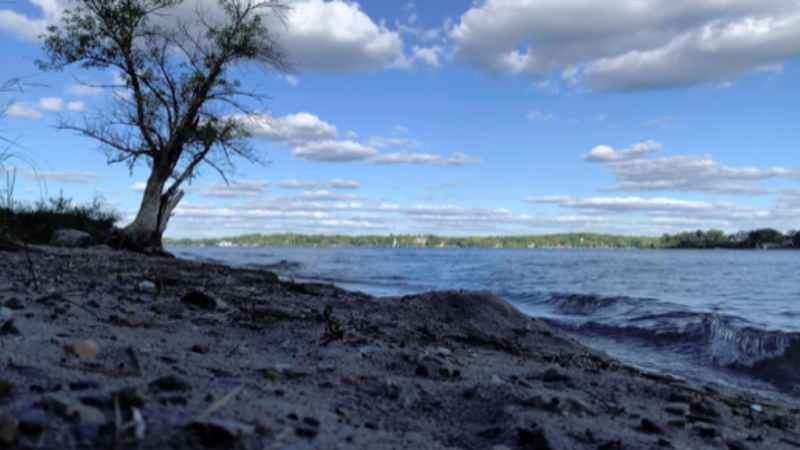Big Island Park gets a new chapter
[anvplayer video=”5058855″ station=”998122″]
A storied island on Lake Minnetonka is starting a new chapter.
After years of plans and projects — and a lot of cleanup — Big Island Nature Park is officially back open to the public.
Big Island sits near the middle of the Lower Lake, on Lake Minnetonka.
The city of Orono finalized its purchase of the eastern part of the island in 2006 — three years after it had been used as a veterans camp for more than 80 years — and in the last five years, the final touches were put on the island.
Thursday, a ribbon-cutting marked the island’s re-opening.

The beach along the eastside of the Big Island Nature Park.[KSTP-TV]
“It feels wonderful, it feels wonderful,” Dennis Walsh, the mayor of Orono, told 5 EYEWITNESS NEWS about finalizing the project.
“As Minnesotans, as a city, we all have history and we have tried to preserve our history to show people what we had,” Walsh said about some of the island’s new features. “[Also that] we can be good stewards of our community and of our assets, and not just put a whole bunch of houses up here,” he said.
The only way to get there is by boat, but once on the island, it’s accessible for everyone; the mayor said accessibility was a big focus of the project.
New features include:
- American with Disabilities Act (ADA)-compliant amenities:
- Walking path,
- Picnic tables,
- Bathrooms,
- Docks,
- Signs with pictures and information about Big Island’s history,
- Overlook areas with views of the lake.
Cleaning was a major step, too. According to the Minnehaha Creek Watershed District — which was also a big part of the project — as many as 150 tons of brush and garbage were removed from the island.
The island has a very eclectic history. From its roots as a home for Native Americans to an amusement park that opened in 1906, to a game farm that helped Minnesota’s pheasant population flourish, and most recently as a camp for veterans and their families, Big Island has had a number of roles in the community.
Orono’s administrator and engineer, Adam Edwards, said on top of the accessibility, the project was also intended to focus on preservation and giving visitors an opportunity to appreciate the island’s past.
“It’s kind of amazing how this particular plot of land has been reused and reused over the years,” Edwards said. “[We’re glad] to be part of that legacy, and [with] putting something together that is here for years and years and years for other people to enjoy.”
This final part of the overhaul cost $753,631. A few contributions include:
- State bonding grant (administered by DEED) — $300,000.
- Department of Natural Resources grant — $200,000.
- Big Island Legacy Fund — $82,100.
It’s free to visit the nature park. Boats can either tie up to docks on the south end of the eastern part of the island, or beach on the very east side of Big Island. People must take their garbage with them off of the island.